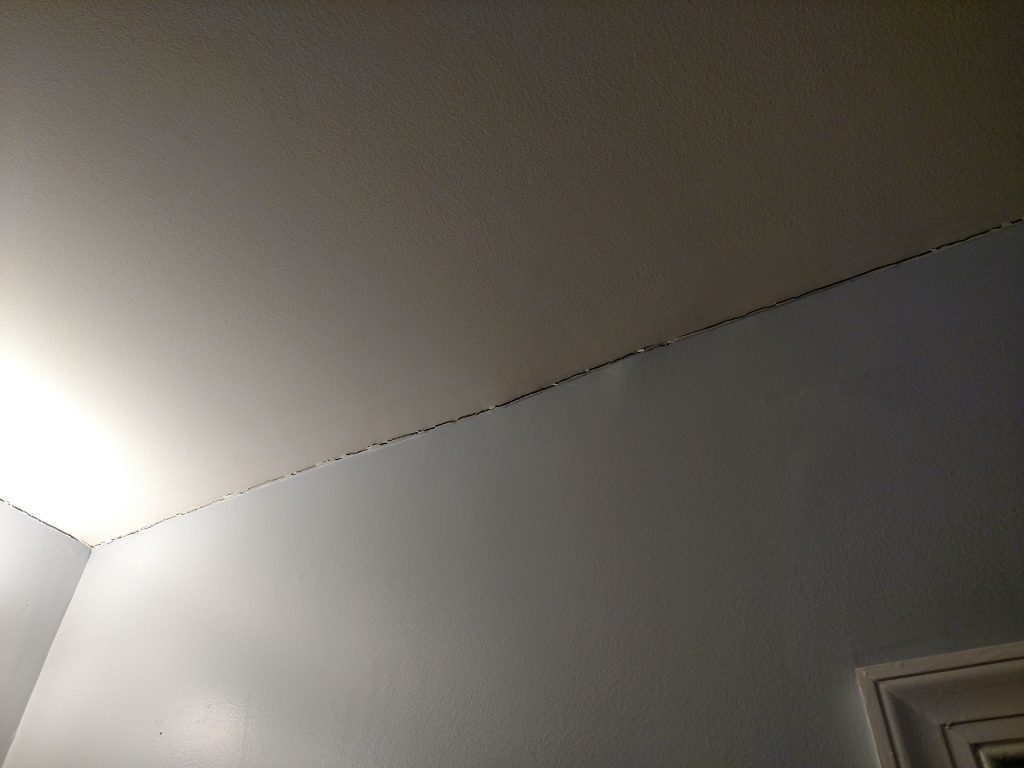A crack between the ceiling and wall can be a concerning sight for homeowners. In this comprehensive guide, we’ll delve into the reasons behind the appearance of these cracks, the potential implications for your home, and effective solutions to address and prevent them.

Crack Between Ceiling and Wall: Unveiling the Mystery
Understanding the Phenomenon
A crack between the ceiling and wall is more than just a cosmetic issue. It can be indicative of underlying structural or environmental problems. Let’s explore the common reasons behind the development of these cracks.
1. Settling of the Foundation
One of the primary causes of cracks between the ceiling and wall is the natural settling of the foundation. Over time, the soil beneath a house can shift, causing the foundation to settle unevenly. This uneven settling puts stress on the structure, leading to cracks in various areas, including the junction between the ceiling and walls.
2. Moisture and Water Damage
Excessive moisture or water damage can weaken the structural integrity of a home. Leaky roofs, plumbing issues, or inadequate ventilation can result in water seeping into the walls and ceiling, leading to cracks and other forms of structural damage.
3. Temperature Fluctuations
Extreme temperature changes, especially in regions with harsh climates, can cause materials in a home to expand and contract. This constant movement can contribute to the development of cracks, particularly in vulnerable areas like the junction between the ceiling and walls.
Crack Between Ceiling and Wall: Identifying the Severity
Signs of a Serious Issue
Not all cracks are created equal. Some may be superficial and easily repairable, while others could be indicative of a more serious problem. Here are signs to help you assess the severity:
1. Width of the Crack
A wider crack, typically exceeding 1/4 inch, may suggest a more significant structural issue. Measure the width of the crack regularly to monitor any changes over time.
2. Accompanying Structural Damage
If the crack is accompanied by sagging ceilings, bowed walls, or other visible signs of structural damage, it’s crucial to seek professional assessment promptly.
3. Recurring Cracks
If cracks are repeatedly appearing after repairs, it could indicate an ongoing problem that needs comprehensive attention.
Crack Between Ceiling and Wall: Addressing the Issue
DIY Repairs vs. Professional Intervention
1. Minor Cracks
For minor cracks, especially those resulting from cosmetic issues rather than structural problems, DIY repairs may suffice. Use a high-quality filler or caulk to seal the crack and repaint the affected area.
2. Major Structural Issues
If the crack is indicative of a larger structural problem, seeking professional help is imperative. Structural engineers and contractors can conduct a thorough assessment to identify the root cause and recommend appropriate solutions.
Read too: A Step-by-Step Guide to Installing Rockwool Insulation in Your Ceiling: Unlock Energy Efficiency
Preventive Measures and Maintenance
Safeguarding Your Home
1. Regular Inspections
Conduct regular visual inspections of your home, focusing on the ceiling and walls. Look for any signs of cracks, water damage, or structural issues.
2. Addressing Water Issues
Promptly address any water-related issues, such as leaks or inadequate drainage. Ensure proper ventilation to prevent moisture buildup.
3. Foundation Maintenance
Regularly inspect and maintain your home’s foundation. Addressing foundation issues promptly can prevent settling-related cracks.
Conclusion
A crack between the ceiling and wall is not a challenge to be ignored. Understanding the causes, assessing the severity, and implementing appropriate solutions are essential steps in maintaining the integrity of your home. Whether it’s a minor cosmetic issue or a symptom of a larger problem, taking proactive measures will not only enhance the aesthetics of your home but also ensure its long-term stability. If in doubt, always consult with professionals to address and resolve the underlying causes of the cracks, safeguarding your home for years to come.
